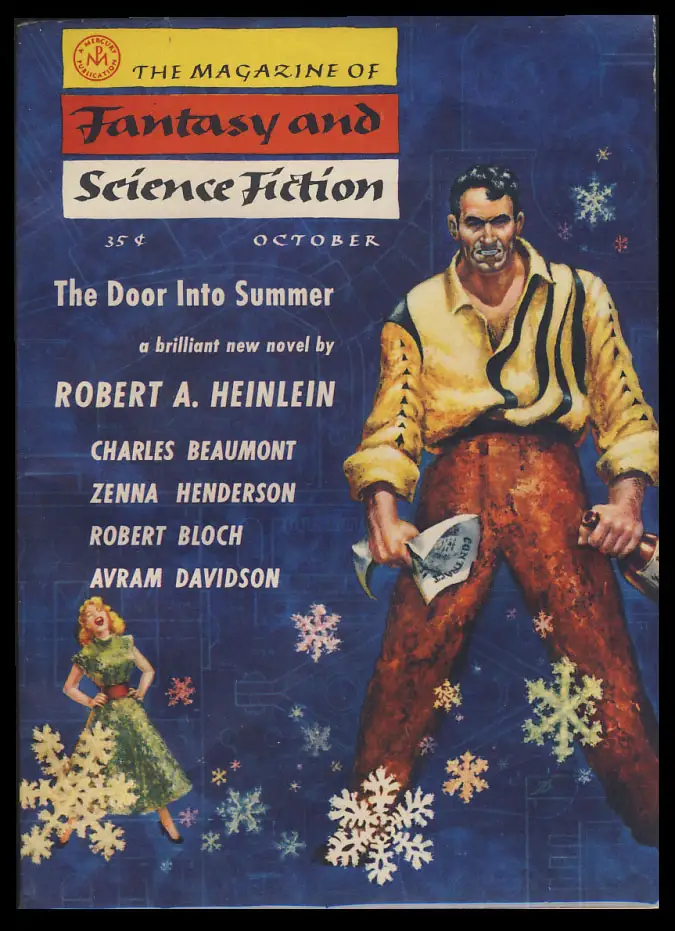
By the end of January (1956) he (Heinlein) was generating a new “adult” book. He had an engineer/inventor on a bender because his wife dumped him to marry a rich man. But the elements weren’t coming together quite right, and he kept turning them over in his mind, changing a bit here and a bit there and seeing how the fit-together improved. One late January morning at breakfast, Ginny crossed his field of vision, being led-between-the-legs by their cat, Pixie. Bemused, he watched her open a people door for him and wait while Pixie sniffed disdainfully and turned away from the snow, complaining vocally at Ginny’s mismanagement of the weather. There were seven people doors leading out, and the same little playlet was reenacted at each door. When Pixie had rejected the last door and stalked away, indignant, Ginny shrugged. “I guess he’s looking for the door into summer.”
Suddenly, all the jumble of story elements he had been fiddling with fell into place in his head—a completely different configuration, and one that felt perfectly right. “Don’t say another word,” he said. He got up and almost ran to his office, eager to start getting the story down on paper. Thirteen days later, The Door into Summer was finished—the shortest length of time he had ever taken to write a full (if short) novel—and nearly perfect as it came off his typewriter. Pixie was the missing element; Robert’s familial affection for “the old warrior” gave the book its emotive core and tied all the incidents together in another ingratiating, seducing book.
Robert A. Heinlein: In Dialogue with His Century, Volume 2: The Man Who Learned Better (1948-1988) by William H. Patterson Jr.



